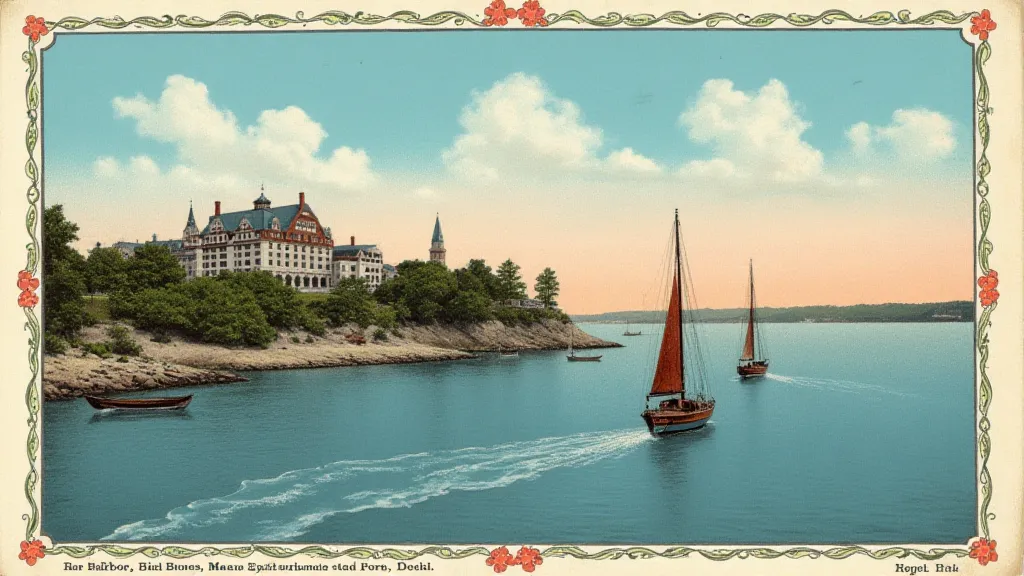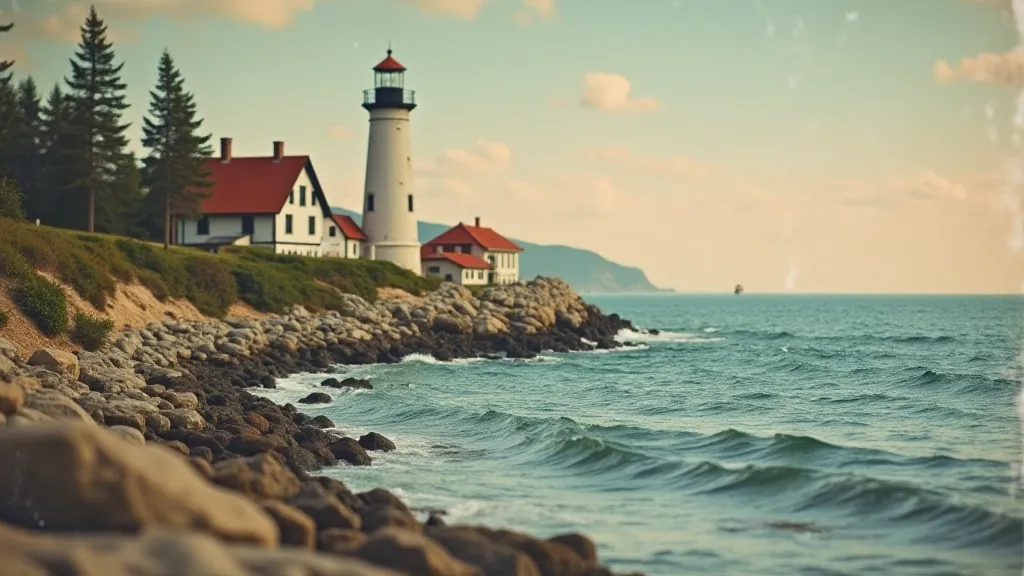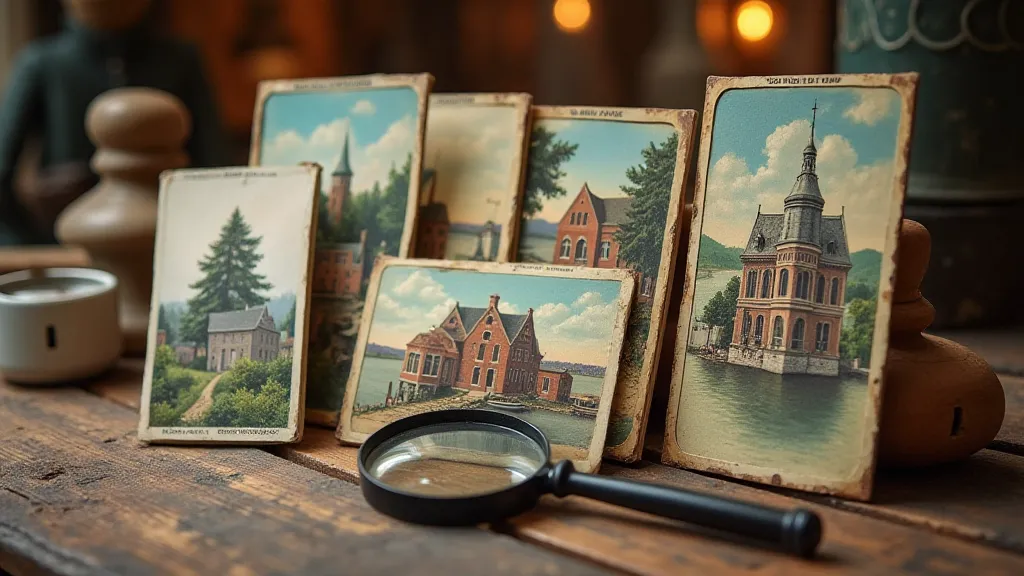The Tourist's Gaze: Postcard Views and the Construction of Maine's Image
There’s something profoundly moving about holding a vintage postcard. It’s more than just a small rectangle of cardboard; it’s a portal to another time, a tangible connection to the hopes and dreams of someone long gone. And when that postcard depicts Maine – a landscape etched into the American imagination as rugged, scenic, and undeniably idyllic – the feeling intensifies. These aren’t just pictures; they're carefully constructed narratives, visual advertisements shaped by the burgeoning tourism industry of the late 19th and early 20th centuries. This article explores how that influence subtly (and sometimes not so subtly) formed the image of Maine as we know it today.
The Dawn of the Maine Postcard Boom
The postcard’s rise coincided perfectly with the explosive growth of American tourism. Before railways and affordable travel, Maine remained relatively isolated. But the arrival of the railroads in the 1840s and 1850s fundamentally altered its accessibility. Suddenly, people from Boston, New York, and beyond could journey north, drawn by the promise of fresh air, pristine wilderness, and a respite from the industrializing cities. This influx of visitors fueled the need for souvenirs, and the postcard, a relatively new invention in the 1860s, proved to be the perfect medium.
Early postcards were often black and white, lithographic prints. They were expensive, and the images, while charming, often lacked the vibrancy we associate with the "golden age" of postcards (roughly 1900-1920). However, the advent of color printing, particularly the photogravure process, dramatically transformed the postcard landscape. Suddenly, the blues of the Atlantic, the greens of the pine forests, and the vibrant reds of the autumn foliage could be captured with remarkable fidelity. This opened up a whole new level of appeal for potential visitors.
My grandfather, a retired carpenter, used to tell me stories of his own grandfather, who ran a small general store in Bar Harbor during that era. "He always had a stack of postcards," he’s said. "Sold 'em alongside the flour and the hardware. People wanted to show their friends back home where they’d been.” That simple act—sending a postcard—became a powerful tool in shaping Maine’s reputation.
Crafting the Image: Idealized Landscapes and Romantic Towns
The key word here is "curated." The images weren't necessarily depictions of reality. They were idealized portrayals designed to entice. Gone were the grimy mill towns, the struggling fishing villages, the harsh realities of life in a rural landscape. Instead, postcards presented picturesque harbors filled with sailboats, charming village greens, and grand Victorian hotels overlooking breathtaking views. The intent was to create a romanticized vision of Maine – a place of tranquility, natural beauty, and wholesome recreation.

Take, for example, the ubiquitous scenes of Acadia National Park. While the park’s natural beauty is undeniable, the postcards often emphasized specific viewpoints – carefully chosen to maximize scenic impact. Cadillac Mountain, the highest point on the U.S. Atlantic coast, became a recurring motif, showcasing panoramic vistas that felt both majestic and accessible. The early photographs were often taken with long exposures, which softened details and imparted a dreamy quality, further enhancing the romantic appeal. Often, the realities of life for those who lived near these scenic locations weren’t as idyllic as the postcards depicted— a hidden narrative of hardship and resilience that rarely made it onto the printed image. The concept of “untamed Maine” that these postcards seemed to promise was often a carefully manufactured illusion.
Even towns that struggled economically were presented in a flattering light. A postcard of a weathered fishing shack might feature a fisherman smiling broadly, reinforcing the image of a hardy and resourceful people. A glimpse of a bustling lumber mill could be transformed into a testament to Maine's industrial strength. It wasn't about representing the full story; it was about selling a dream.
The Human Element: Photographers and Publishers
Behind every postcard is a story of human effort. The photographers, often itinerant professionals, played a crucial role in shaping the visual narrative. Men like William H. Gardner and Freeman H. Douglass were prolific Maine postcard photographers, traveling across the state and documenting its landscapes and towns. Their work wasn't simply about capturing an image; it was about constructing a brand – a particular vision of Maine that resonated with potential tourists. This vision often came at a cost – a glossing over of the hardships and the silent narratives of those who called Maine home. Examining those lost stories, those unspoken realities behind the manufactured beauty, reveals a deeper understanding of the era and the complicated relationship between tourism and community.
The publishers, too, wielded considerable influence. Companies like the Detroit Publishing Company and the Valentine Publishing Company were major players in the postcard industry, commissioning photographers, designing layouts, and marketing the finished products. They understood the power of visual storytelling and employed it strategically to promote Maine as a desirable vacation destination.
Examining the back of these old postcards can be remarkably revealing. The messages scrawled in faded ink offer a glimpse into the lives of the senders – families sharing their vacation experiences, friends keeping in touch, lovers expressing their affections. These handwritten notes provide a poignant counterpoint to the carefully constructed imagery on the front, reminding us of the human connection that these small pieces of cardboard represent. Sometimes, these messages hinted at deeper complexities, suggesting that the idyllic portrayal on the front belied a more nuanced reality.
Restoration & Collecting: Preserving a Legacy
Collecting vintage Maine postcards is more than just an enjoyable hobby; it's a form of preservation. These postcards are tangible links to a bygone era, offering invaluable insights into the history of the state and the evolution of its image. Many collectors focus on specific themes—lighthouses, railroads, summer resorts—building collections that tell a particular story. For those fascinated by the darker side of this romanticized vision, exploring postcards that depict the industries driving Maine’s economy offers a compelling and often overlooked perspective. It's a look beyond the picturesque, a chance to consider the impact of progress on the lives of Mainers. This aspect of collecting can bring forth a more complete understanding of Maine’s past.

Restoring vintage postcards can be a delicate process. Over time, they can become faded, torn, or stained. While full restoration is often discouraged (as it can diminish the postcard's historical value), careful cleaning and minor repairs can help preserve their condition. Specialized conservationists offer professional restoration services for valuable postcards, ensuring that they are properly cared for.
Even simple steps like storing postcards in acid-free sleeves and albums can significantly extend their lifespan. Understanding the fragility of these historical artifacts and handling them with care is essential for preserving them for future generations. The value isn’t just in the image itself; it’s in the story it tells—a story shaped by tourism, ambition, and the enduring appeal of the Maine landscape. And sometimes, that story is one of hardship and resilience, subtly concealed beneath a veneer of idyllic charm. The echoes of those struggles can be found in the very details of the postcards themselves, if one knows where to look. As a deeper dive into this period reveals, the romanticized portrayal often clashes with the reality of lives lived amidst the industries that fueled that romantic image. Further exploration into Whispers of the Wild: The Untamed Maine Portrayed in Early Postcard Scenes allows for a more comprehensive understanding of this dynamic.

The “Tourist’s Gaze,” as captured on these vintage postcards, offers a fascinating window into the past—a testament to the power of imagery and the enduring allure of Maine’s image. These small pieces of cardboard aren't just souvenirs; they are cultural artifacts, preserving a carefully constructed narrative that continues to shape our understanding of the Pine Tree State.





